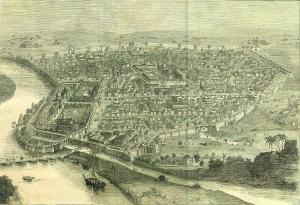
A refreshingly sweet and innocent observation by a child of an otherwise very worrying issue of—river pollution—with a heartwarming appeal for water conservation. Once upon a time, during the holidays, I was travelling from Delhi to my village nearby. On the way, we guys came across the Yamuna River. Looking at the river, my younger brother instantly commented, “It doesn’t snow in Delhi even during winters. But here, on the river, it seems to have snowed in peak summers!”... Then, I explained to him that the white foam on the river surface is not snow but the chemical effluents emitted by huge …

The Yamuna River is the largest tributary of the Ganga. It travels barely a distance of 22 km through Delhi. However, this region contributes to about 80 per cent of its total pollution load. Currently, this stretch discharges waste water from almost 22 drains into the river. Untreated effluents, containing toxins and chemicals, released from houses and industries creates froth (white foam) on the river’s surface. Algae, in addition, prevents sunlight from venturing into the depths of this river. Plus, low water level in the river causes concentration of these pollutants…

How the life around the Yamuna River changed with time and people Tributaries of the Yamuna flowed through the city and several rulers tapped the streams and fed the water through massive sluices into tanks, to provide water for their people. Today, these tributaries have dried up and become cemented tunnels underneath the city that carry sewage to the Yamuna.

